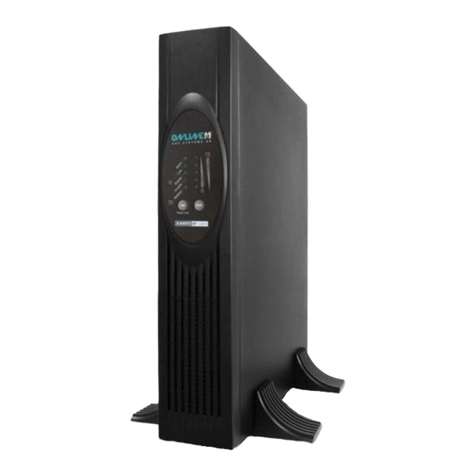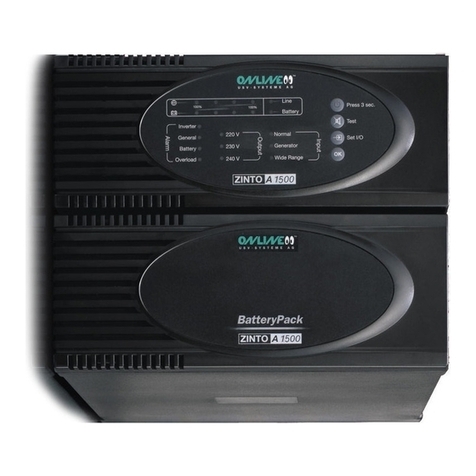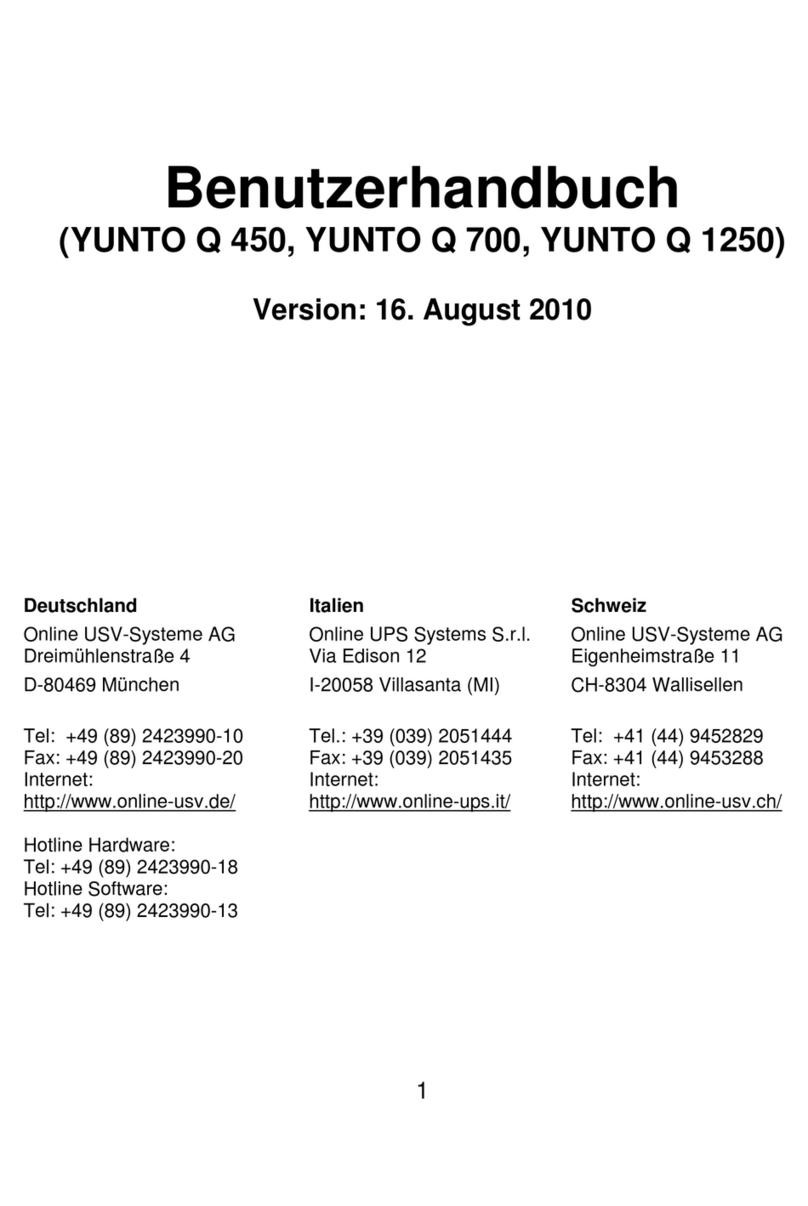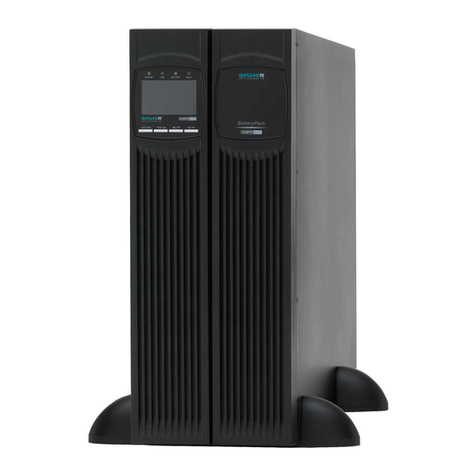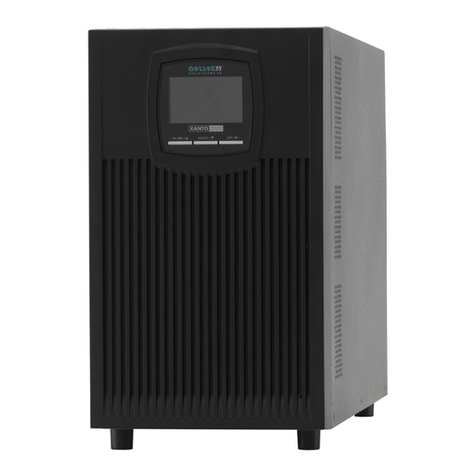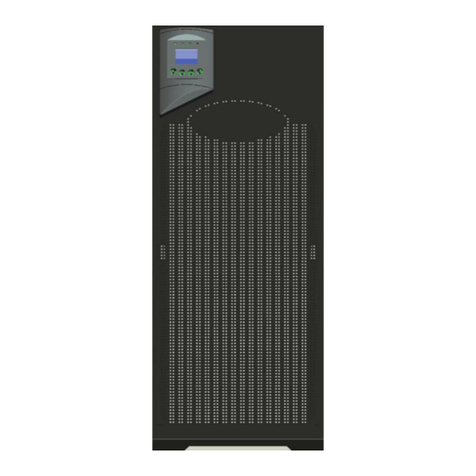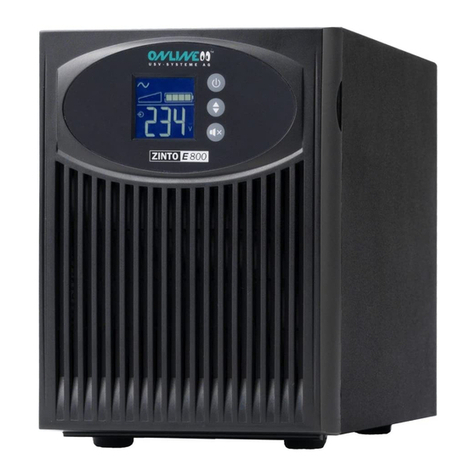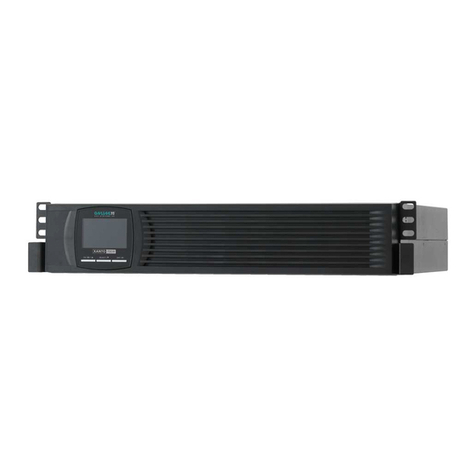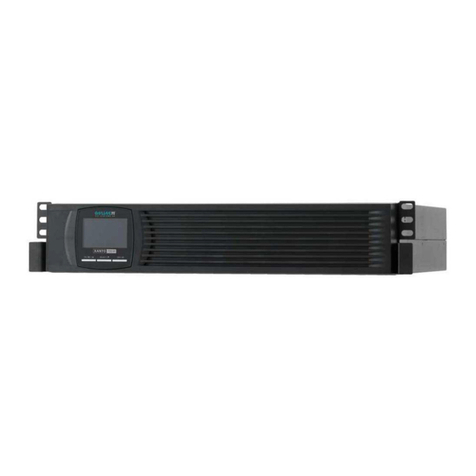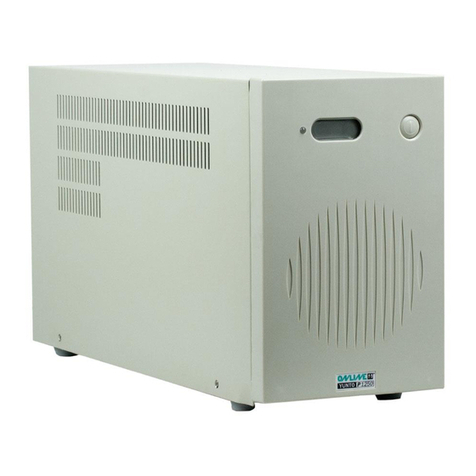2 / 56
X700-3000_usermanual_engl_20170405.docx
Content
User manual ...................................................................................... 1
1. Introduction................................................................................. 5
2. Safety warnings .......................................................................... 7
3. Installation .................................................................................. 8
3.1 Checking the delivery.......................................................... 8
3.2 Unpacking the UPS system ................................................ 8
3.3 Checking the accessories ................................................... 9
3.4 Installation as tower, activating battery ............................... 9
3.5 Installation in a rack, activating the batteries .................... 11
3.6 Getting started................................................................... 14
4. Operation.................................................................................. 17
4.1 Control panel ..................................................................... 17
4.2 Display and menu.............................................................. 19
4.3 Settings ............................................................................. 22
4.4 Operating statuses ............................................................ 24
5. Communication and interfaces................................................. 28
5.1 RS 232 and USB interface ................................................ 28
5.2 Slot for interface cards ...................................................... 29
5.3 Emergency Power Off (EPO) function .............................. 29
5.4 Surge voltage protection for data and telephone lines (DSL /
telephone / fax / network)............................................................. 31
5.5 DataWatch software .......................................................... 31
6. Maintenance ............................................................................. 34
6.1 Care and maintenance ...................................................... 34
6.2 Storage.............................................................................. 34
6.3 When to change the batteries ........................................... 34
6.4 Changing batteries in tower .............................................. 35
6.5 Changing the batteries in rack .......................................... 36
6.6 Testing the new batteries .................................................. 39
6.7 Disposing of the old batteries or UPS system................... 39
7. Troubleshooting........................................................................ 41
7.1 Error codes........................................................................ 41
7.2 Warnings ........................................................................... 41
7.3 Troubleshooting................................................................. 42
7.4 Muting the alarm................................................................ 44
7.5 Support.............................................................................. 44
